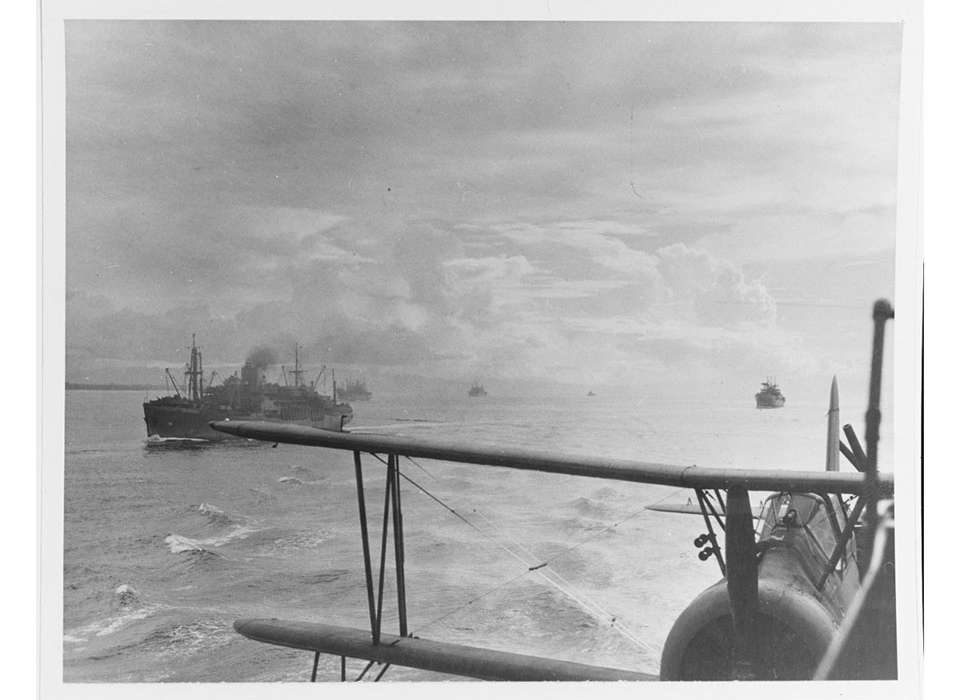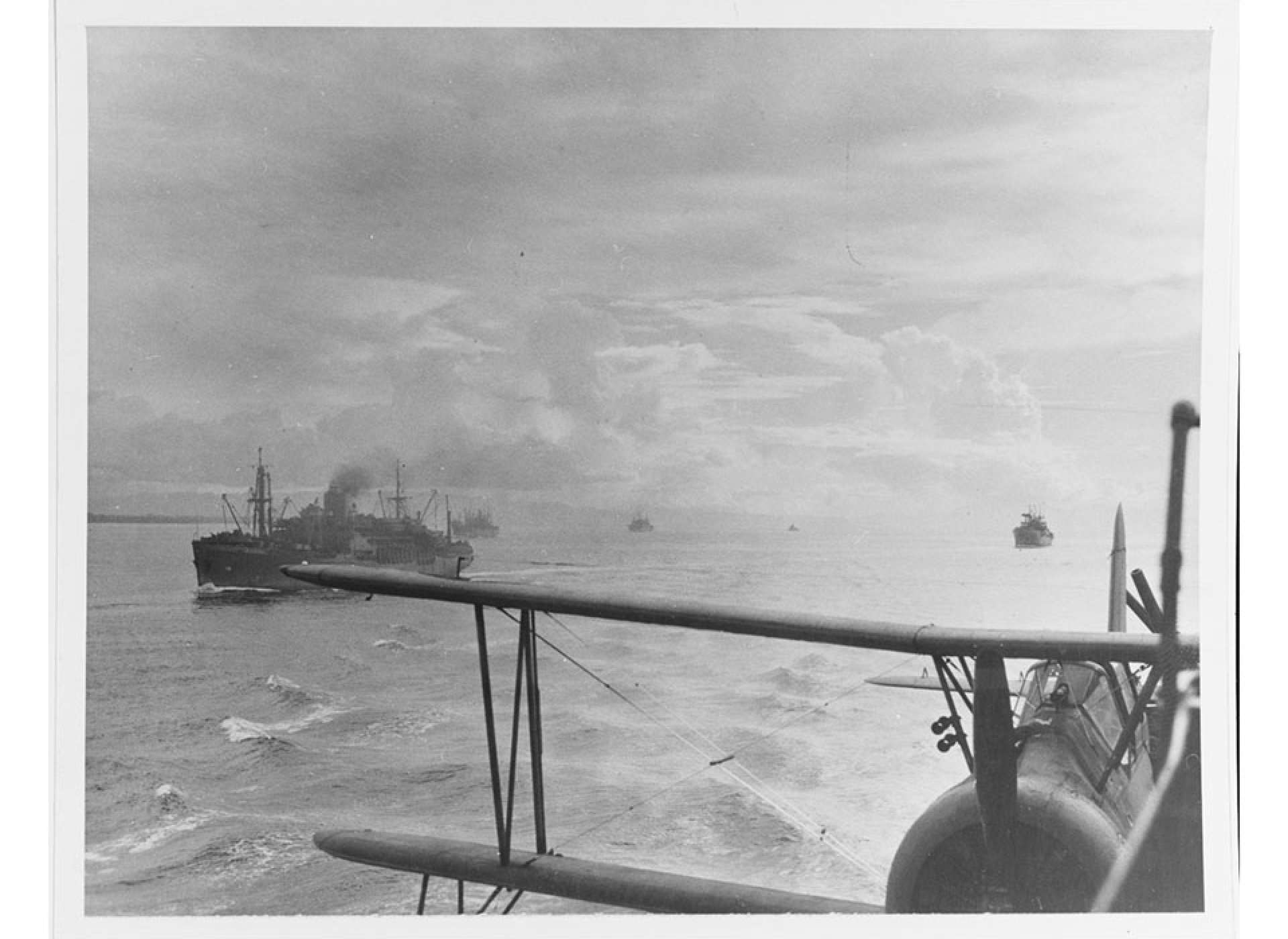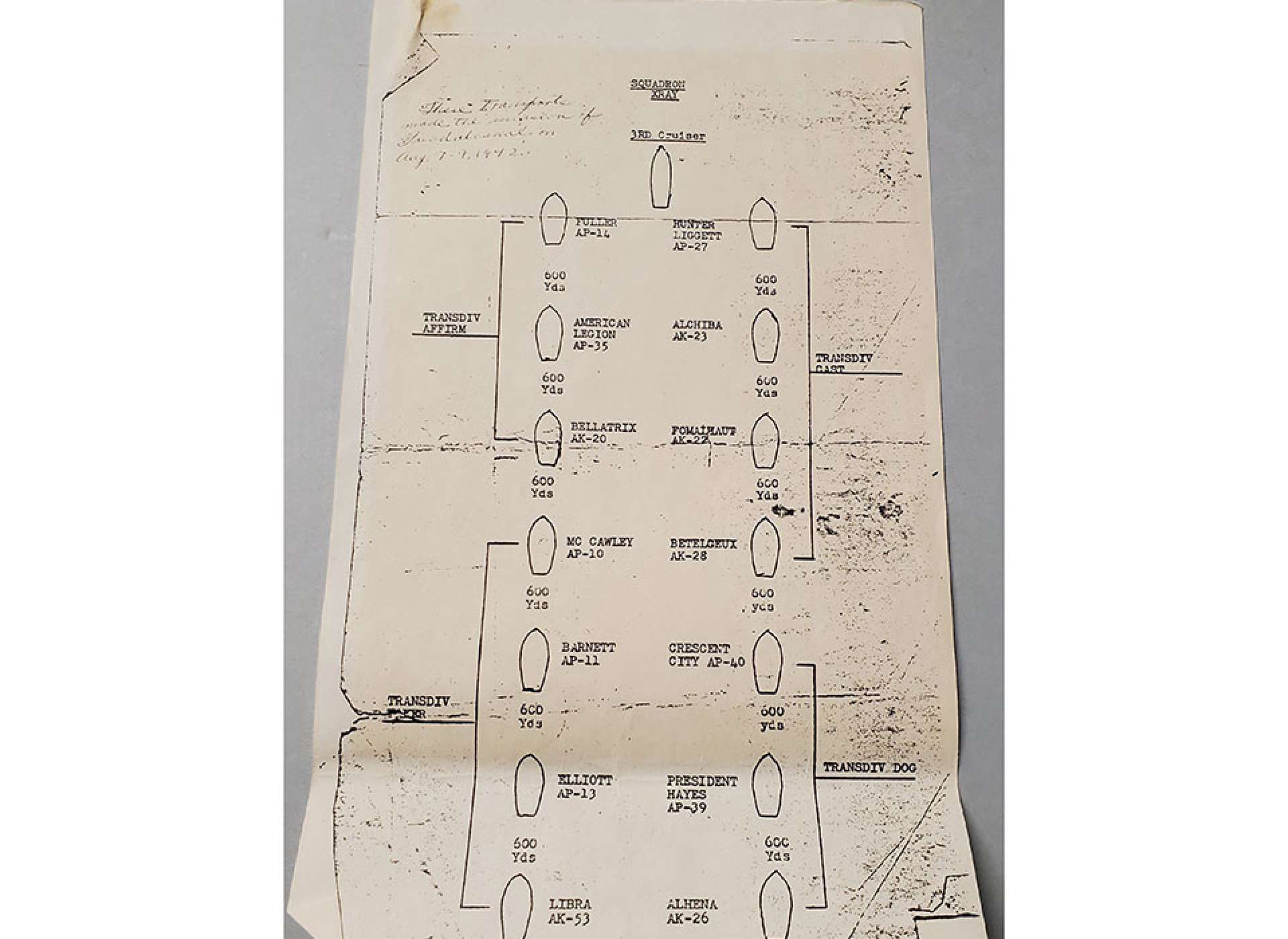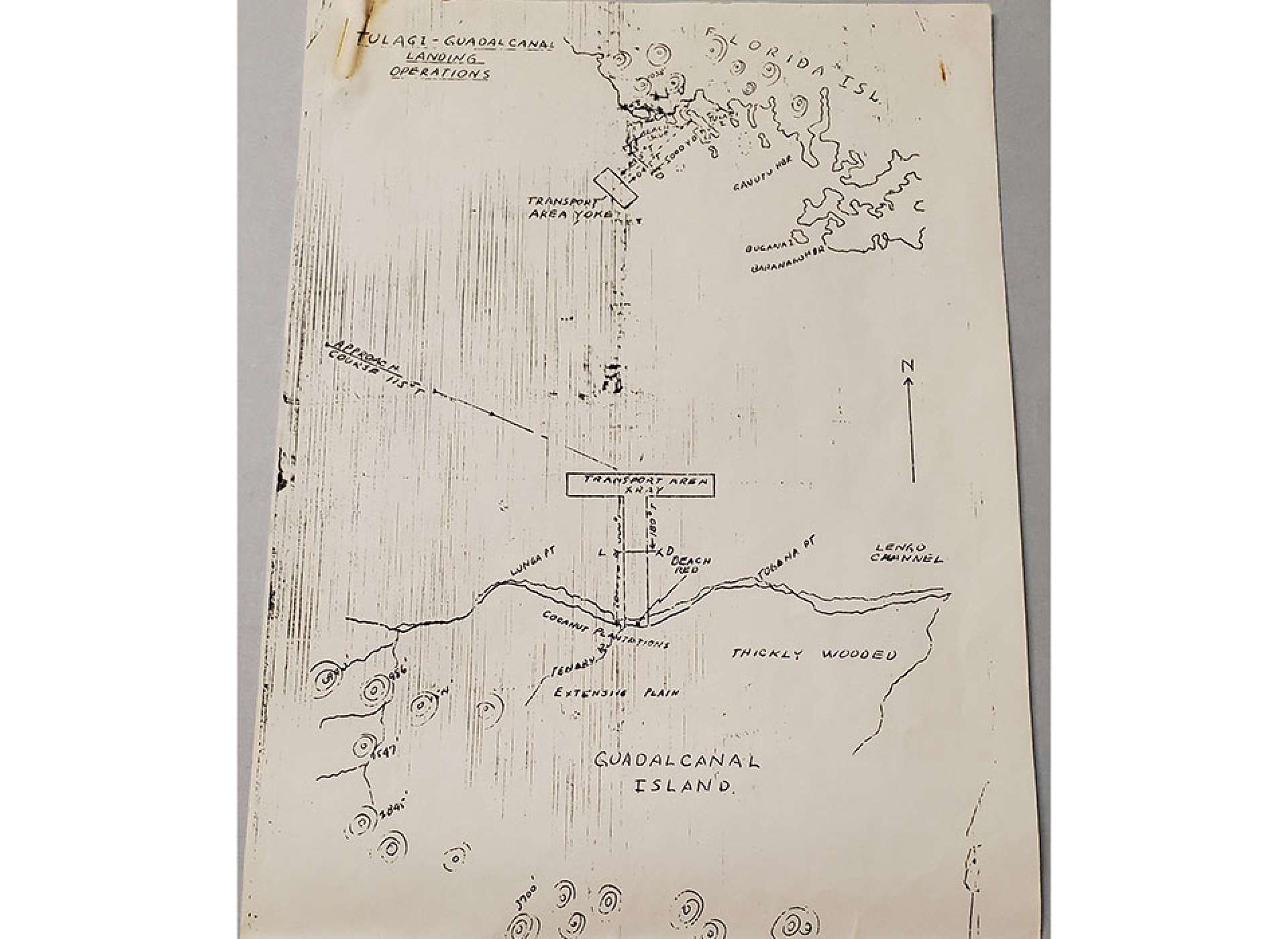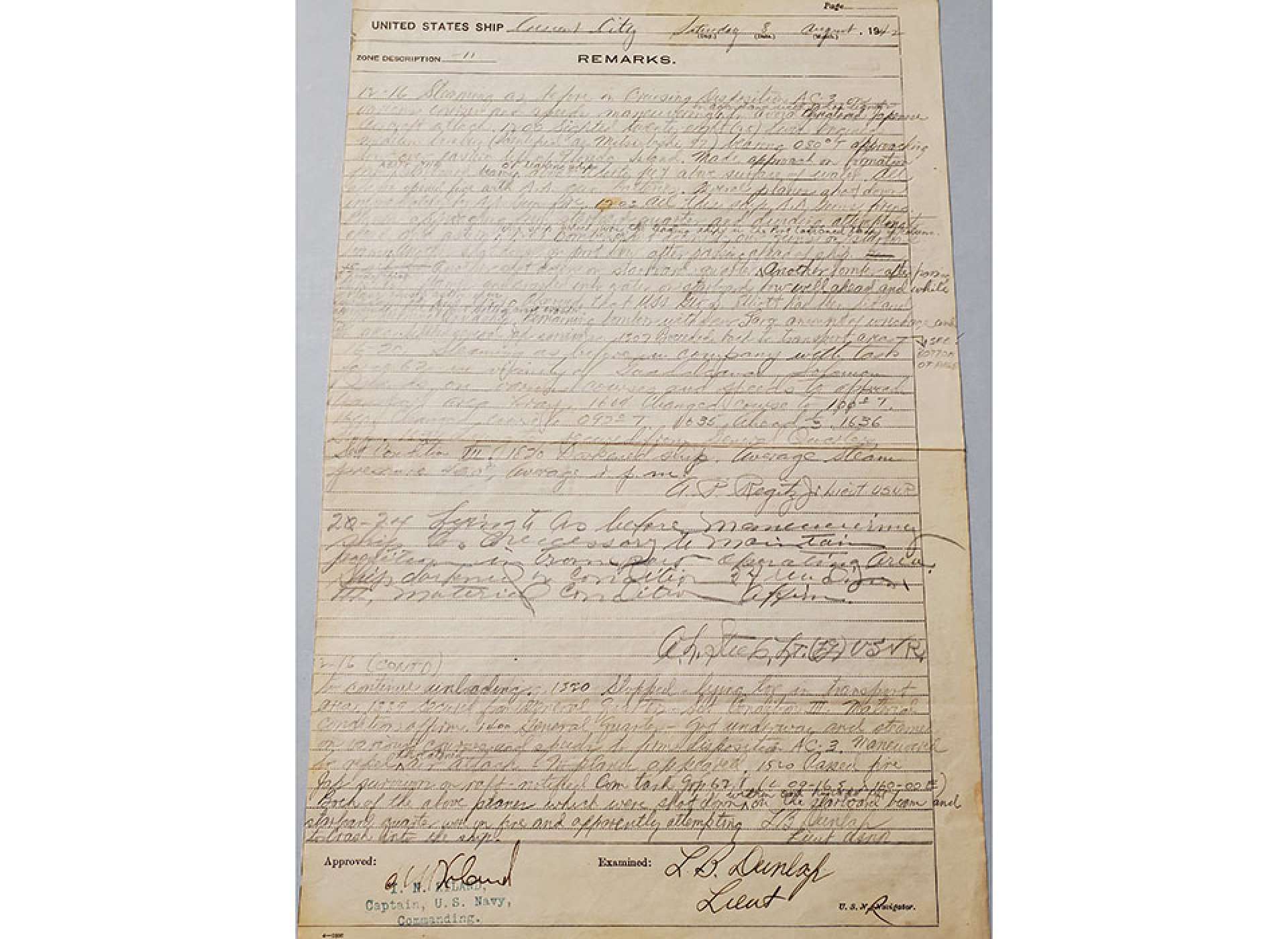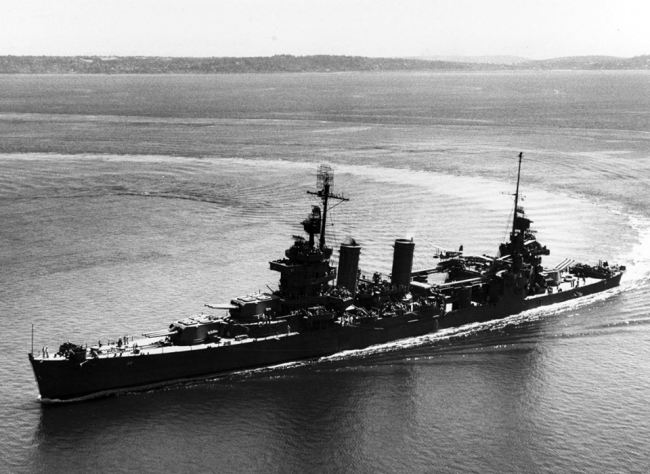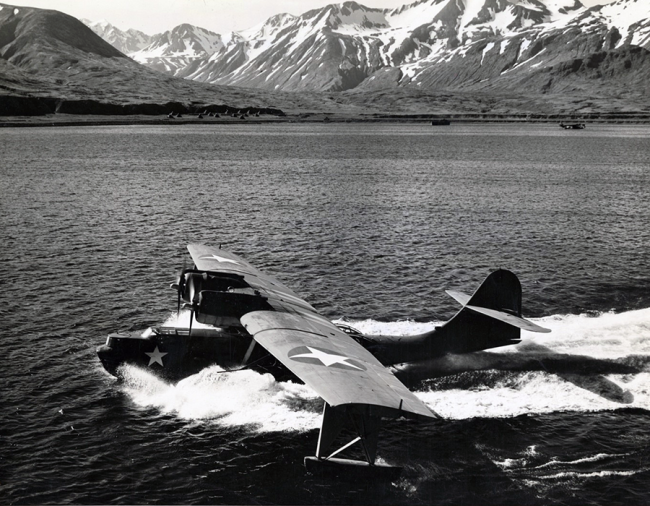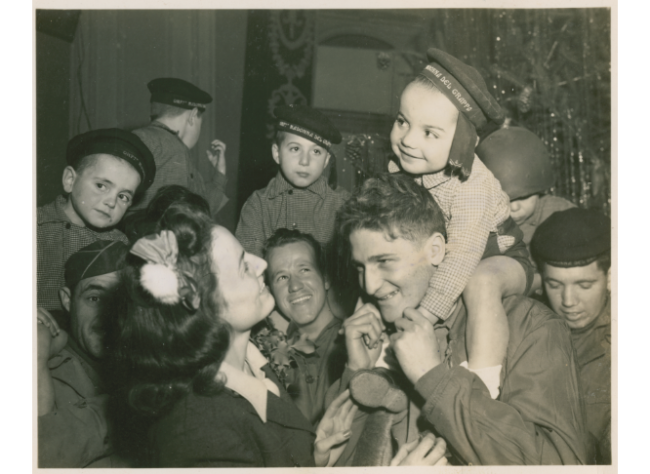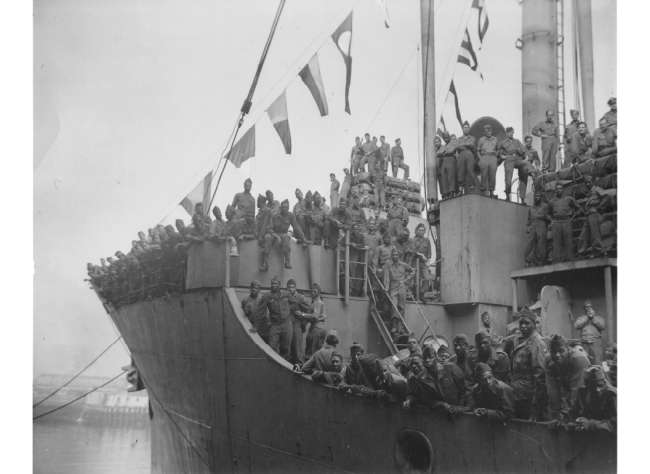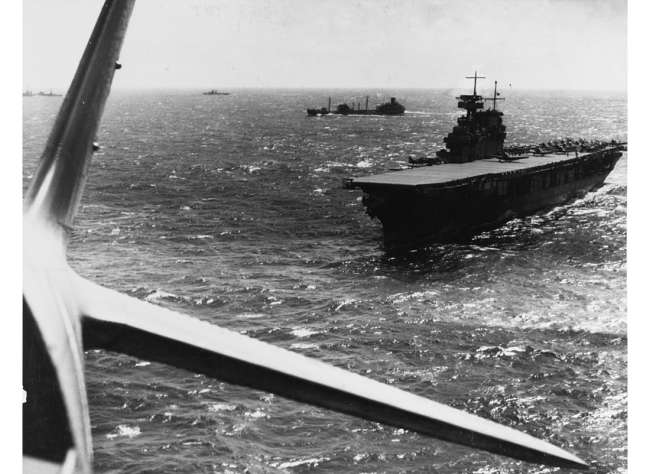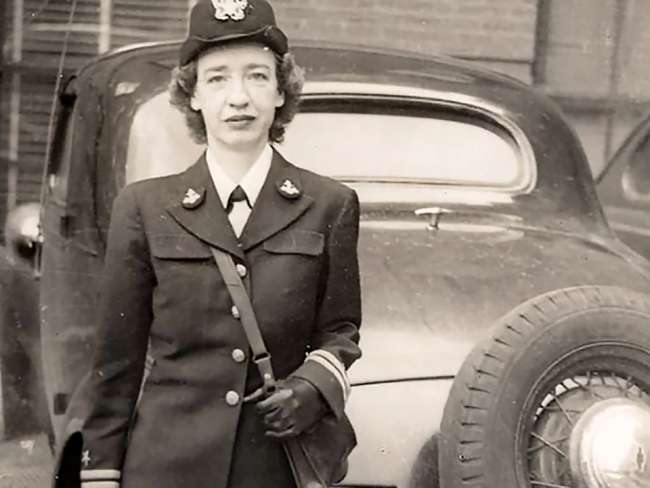While warships like battleships, aircraft carriers, and submarines usually grab the attention and admiration of people, it is the ships in the background, like transports, that usually make some of the largest contributions to victory. Without these ships moving men and materiel from place to place, the whole machinery of war grinds to a halt. Sometimes, though, one of these vessels rises to the top and separates itself from the rest. One such vessel was the USS Crescent City (AP-40/APA-21).
The Crescent City started off as just another cargo vessel. She was built at Bethlehem Shipbuilding Company in Sparrow’s Point, Maryland and was launched on February 10, 1940 as the Del Orleans. Originally built for the Delta Line as a coffee hauler and passenger ship to go between the United States and Africa, she only made one voyage before the US Navy, desperate for ships, took her over in June 1941. The conversion to a troop transport was done at Alabama Dry Dock and Shipbuilding Company in Mobile, Alabama where she was placed under the control of Commander Walter C. Calhoun and commissioned in the US Navy on October 10, 1941, as the USS Crescent City (AP-40). The ship had a crew of 500, and would be able to carry over 1,100 men into combat.
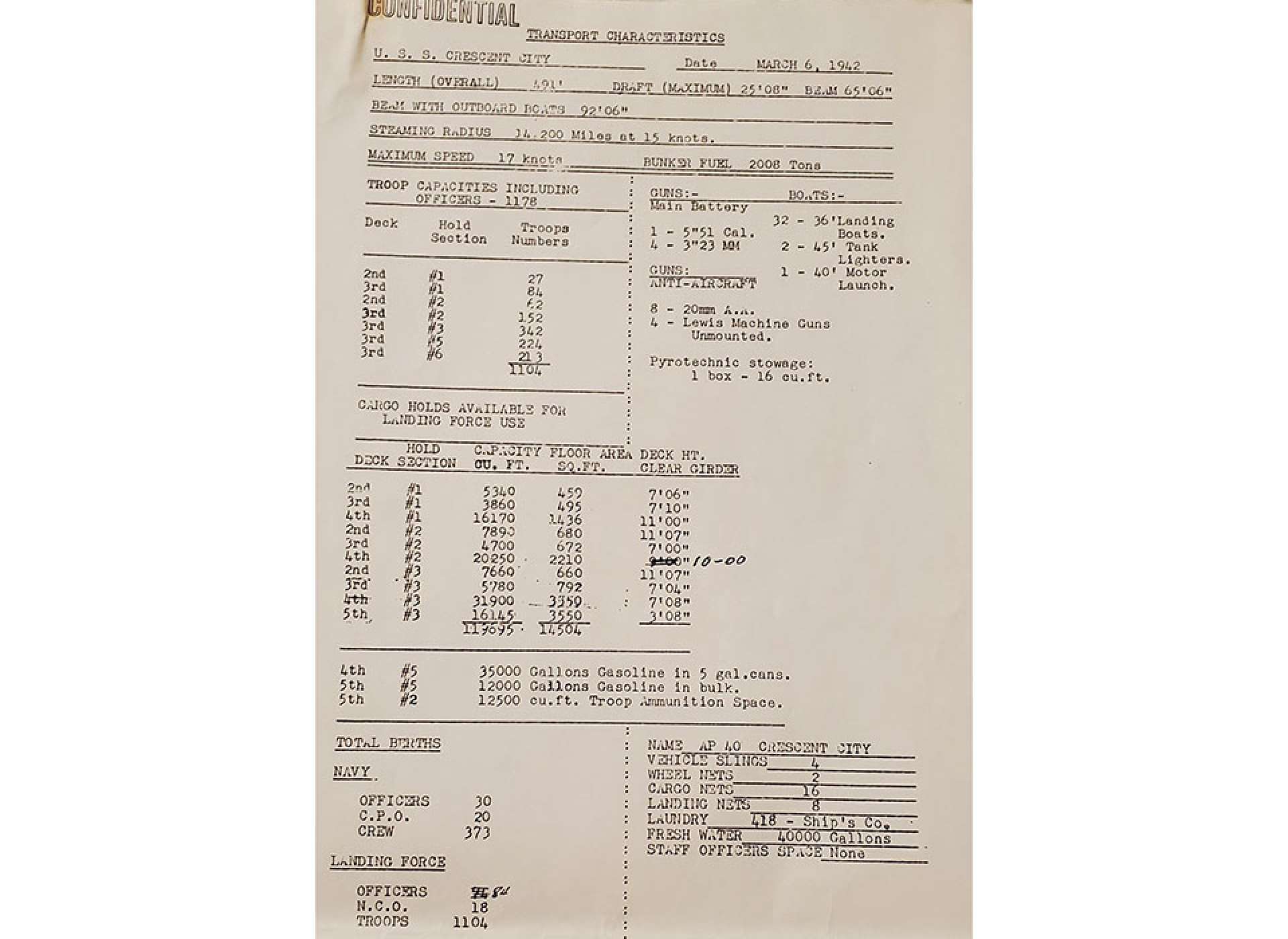
Dated March 6, 1942, this confidential US Navy document shows the characteristics and capabilities of the Crescent City. Gift in Memory of Lawrence B. Dunlap, 2018.117.
After the Japanese attack at Pearl Harbor on December 7, 1941, the Crescent City sailed for Norfolk, Virginia and joined a convoy headed for the Panama Canal Zone, before sailing to San Diego, and eventually, Pearl Harbor itself. In the following weeks, the ship made numerous trips between Hawaii and California bringing civilians back to the mainland and military personnel and supplies to Pearl Harbor. In March/April 1942, the Crescent City saw her first action when she took part in the Efate operation. After it was concluded, she went back to San Diego and picked up US Marines for practice amphibious landings in the Fiji Islands. The practice landings were a disaster, but the lessons learned would quickly be put to use as the United States would be going on the offensive at a place few people had ever heard of: Guadalcanal.
The discovery of a Japanese airstrip being constructed on Guadalcanal forced the United States into action, and on July 31, 1942, the Crescent City, 18 other transports, 8 cruisers, 24 destroyers, screened by aircraft carriers, set off for the island. The landings began on August 7, 1942, at Guadalcanal and Tulagi, and initially, met little Japanese resistance. What followed was months of continuous, fierce, and deadly combat in the air, on the sea, and on land. While the outcome of the battle hung in the balance, the Crescent City made numerous trips to and from the island, delivering desperately needed men and supplies to try to hold off the Japanese attempting to throw the Americans off the island. In total, the Crescent City made 14 trips and brought 7,000 men to Guadalcanal between August 1942 and February 1943. Due to the Crescent City’s and other ships efforts, the US Navy reclassified them to Attack Transports (APA) to differentiate them from standard cargo carriers and to reflect their status as transports that took part in the assault landings themselves.
-

Ships of the US invasion force steaming away from Guadalcanal after the landings. Photographed on August 9, 1942, from the USS Chicago (CA-29) the view looks westward with Guadalcanal in the background. The Crescent City is on the left with a Curtiss SOC Seagull float plane in the foreground. Courtesy Naval History and Heritage Command.
-

This document shows the layout of the US landing force on its approach to Guadalcanal in August 1942. The Crescent City. is the 5th ship in the right column. Gift in Memory of Lawrence B. Dunlap, 2018.117.
-

A copy of the hand drawn map used by the Crescent City on the way into what would soon be known as Iron Bottom Sound because of the huge loss of men and ships off the shores of Guadalcanal and Tulagi. The landing beaches on both Guadalcanal and Tulagi are shown here, as well as the transport gathering areas. Gift in Memory of Lawrence B. Dunlap, 2018.117.
-

A page from the log book of the Crescent City from August 8, 1942, the day after the landings on Guadalcanal. This page was acquired by Lawrence B. Dunlap, who was an officer on the Crescent City throughout the war. Gift in Memory of Lawrence B. Dunlap, 2018.117.
At the end of 1943 and throughout 1944, the Crescent City would be a very busy ship. Crescent City took part in the assault landings on Bougainville and conducted follow up supply runs during November 1943-February 1944. It was also during the Bougainville campaign that the ship’s slogan: “Heads Up and Tails Over the Dashboard” was introduced. She then took part in the assault landings on Guam in July 1944 and carried members of the 3rd Marine Division to the island. The ship also served as a floating hospital treating wounded men from the battle. Next up were the landings on Peleliu in September 1944, where she landed Colonel Chesty Puller and men from the famous 1st Marine Regiment of the 1st Marine Division. She again served as a floating hospital offshore treating men from the devastating battle unfolding on the island. Finally, even though the ship was badly in need of an overhaul, she took part in the landings on Leyte in the Philippines in October 1944 where Crescent City carried members of the US Sixth Army. Once her operations were done off Leyte, the Crescent City entered overhaul which was completed in time for the ship to join the assault on Okinawa in April 1945.
During the Okinawa campaign, the Crescent City would serve as a hospital ship for eight weeks and treat nearly 3,000 men. She also served as a receiving ship and processed over 10,000 men during a four-month period. Because of the devastating kamikaze attacks unfolding in the skies over the US fleet off the island, the ship went to general quarters 215 times.
After the atomic bomb strikes and the Japanese surrender, the Crescent City carried members of the 1st Marine Division to China and took part in Operation Magic Carpet bringing service-members back home to the United States. Throughout the war, the Crescent City would shoot down eight Japanese planes, earn 10 Battle Stars, and serve as a flagship for three major amphibious assaults. She served from Guadalcanal through Okinawa, spent more time in a combat area than any other transport in the US Navy. Crescent City also traveled 160,000 miles and transported 90,000 men. Amazingly, even though she was in the thick of the fight, the ship was never damaged.
After Crescent City was no longer needed for service, she was mothballed in San Francisco where she sat until 1970 when she became a training ship for the California Maritime Academy. She served in this role until the 1990s and was turned back over to the government. Unfortunately, while efforts were made to save her, she was scrapped in 2012. Even though the Crescent City is no longer with us, she is a shining example of a ship that while not carrying mammoth 16” guns or having the ability to launch dozens of aircraft, was able to make a difference in a global conflict.
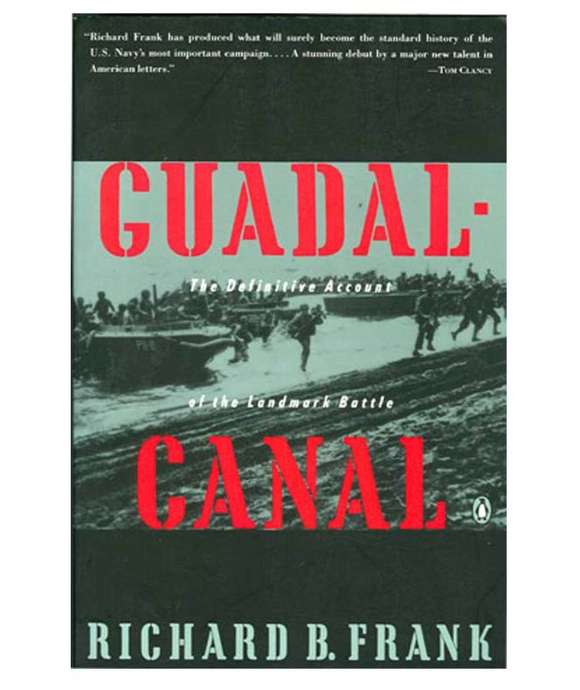
Guadalcanal
Support the continuing educational mission of The National WWII Museum by shopping our Museum Store book selection here.
This article is part of an ongoing series commemorating the 75th anniversary of the end of World War II made possible by Bank of America.
James Linn
A New Orleans native, James Linn first became involved with the institution then known as The National D-Day Museum in 2001 as an eighth-grade volunteer on weekends and during the summer. Linn joined The National WWII Museum staff in 2014 and served as a Curator until 2020.
Cite this article:
MLA Citation:
APA Citation:
Chicago Style Citation:
